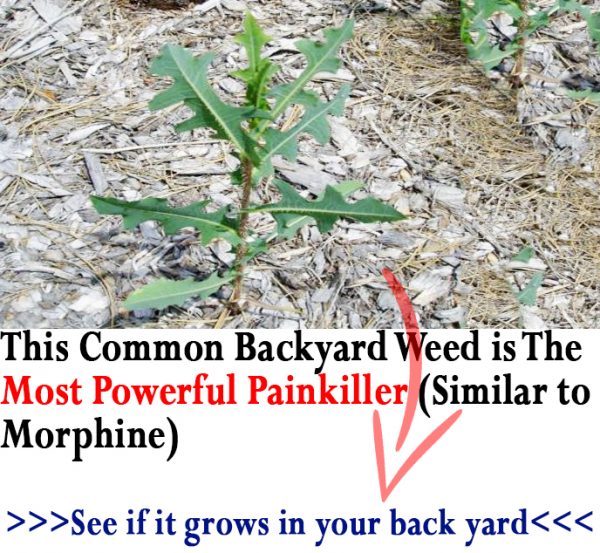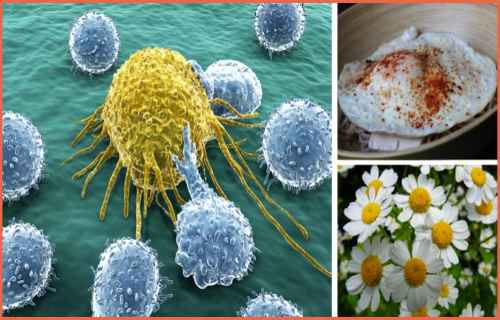
Nature’s medicine
There are times when it might be smarter to use an herbal remedy than a pharmaceutical. For example, sometimes an herb offers a safer alternative. Take chamomile: The flowers have been used for centuries as a gentle calmative for young and old alike. It’s non-habit-forming and well tolerated, and a study sponsored by the University of Michigan found that chamomile extract had roughly the same efficacy as many prescription sleeping medications when given to adults with insomnia. Likewise, peppermint oil has been shown to be as effective as pharmaceutical drugs for relieving irritable bowel syndrome, but without the ofttimes dangerous side effects. And clinical studies have shown that ginger relieves morning sickness, sage can relieve a sore throat, and hibiscus tea gently lowers blood pressure.
I believe it’s better to use mild remedies for minor health problems and save the more potent—and risky—prescription medications for more serious conditions. Here then, are my top 25 favorite healing herbs and their uses. All are safe and effective, but be sure to discuss any herbs you are taking with your doctor. Some herbal remedies (such as the antidepressant St. John’s wort) can interact with medications.
Ashwagandha
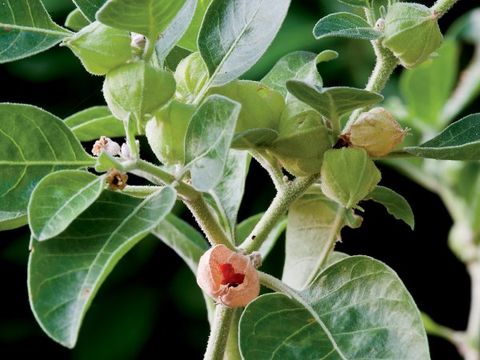
(Withania somnifera)
Uses: Rejuvenating tonic, anti-inflammatory, reduces anxiety, boosts immune health
Preparation and doses:
Tea: Simmer 1 tsp dried and sliced root in 1 cup water or milk for 10 minutes. Strain. Drink 1 or 2 times per day.
Standardized Extract (2–5% withanolides): Take 500 mg 2 or 3 times per day.
Concerns: Can cause milk sedation; potential to stimulate thyroid hormones
Black Cohosh
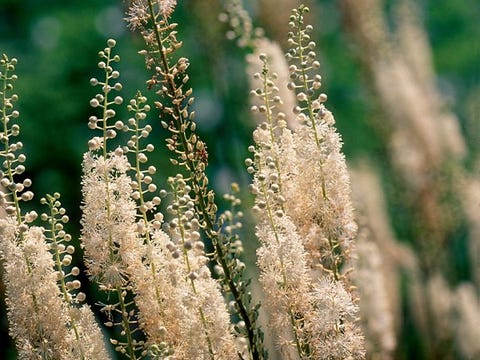
Uses: Relieves menstrual cramps and arthritic pain; commonly used to ease menopausal symptoms
Preparation and doses:
Tincture: Take 1–2 ml 3 times per day.
Standardized extract: Take 20–80 mg 2 times per day.
Concerns: Very rare case reports of liver damage (likely due to misidentified herb); purchase only from reputable supplier
Calendula

(Calendula officinalis)
Uses: Calendula has long been used to relieve inflammation of the mouth, throat, and stomach; popular as a topical cream or ointment to relieve rashes and irritation and to help heal wounds.ADVERTISEMENT – CONTINUE READING BELOW
Preparation and doses:
Tea: Pour 1 cup boiling water over 2 tsp petals. Steep for 10 minutes. Strain. Use as needed as a mouthwash, gargle, or tea.
Ointment: Apply to skin 2 or 3 times per day as needed.
Concerns: None known
Catnip
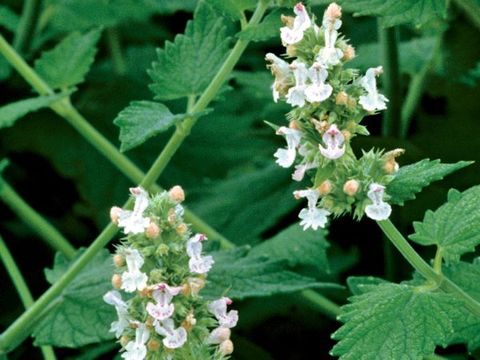
Uses: Soothes an upset stomach; reduced anxiety and tension
Preparation and doses:
Tea: Pour 1 cup boiling water over 4 or 5 fresh or 1 tsp dried leaves. Steep for 5 minutes. Strain and sweeten, if desired. Drink 1 or 2 times per day.
Concerns: None known
Chasteberry
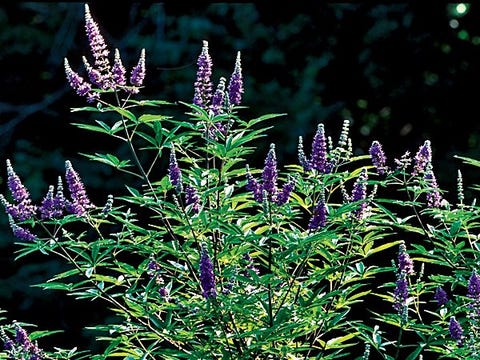
(Vitex agnus-castus)
Uses: Premiere herb for relieving PMS symptoms
Preparation and doses:
Capsules: Take 250–500 mg dried fruit once per day.
Tincture: Take 2–3 ml each morning.
Concerns: None known
Cranberry

(Vaccinium macrocarpon)
Uses: Well-established treatment for reducing the risk of bladder infection; could also be beneficial for chronic prostatitis
Preparation and doses:
Juice: Drink ½-¾ cup twice per day.
Capsules: Take 300–500 mg concentrated juice extract 2 times per day.
Concerns: None known
Echinacea
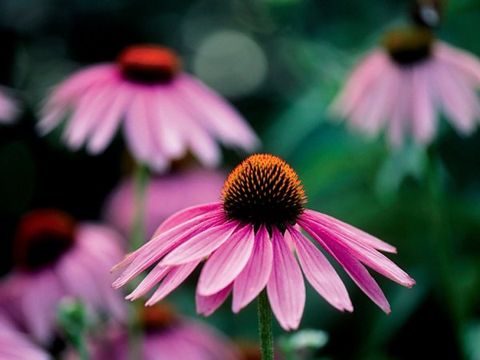
(Echinacea spp.)
Uses: Antiviral and immune-enhancing properties; popular for relieving colds and upper respiratory infections (approved in Europe for these uses)
Preparation and doses:
Tea: Simmer 1 tsp dried and sliced root in 1 cup water for 10 minutes. Strain. Drink 1-3 cups per day.
Tincture: Take 5 ml 3-6 times per day at onset of cold symptoms.
Concerns: Rare allergic reactions
More from Prevention: 16 Doctor-Approved Home Remedies
Elderberry
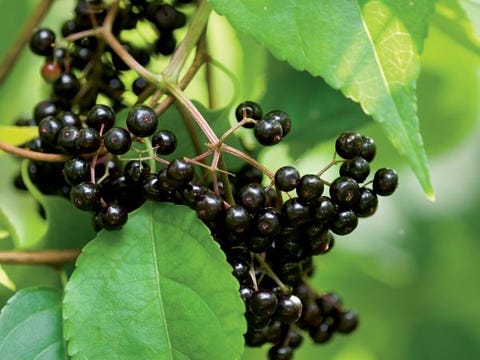
(Sambucus nigra, S. canadensis)
Uses: Elderberry flowers have been valued as a remedy for colds and fever for centuries; fruit extracts have been shown to have significant antiviral activity, especially against the flu.
Preparation and doses:
Tea: Pour 1 cup boiling water over 1–2 tsp flowers. Steep for 10 minutes. Sweeten if desired and drink hot 2-3 times per day.
Berry extracts: Use as directed.
Concerns: None known
Garlic
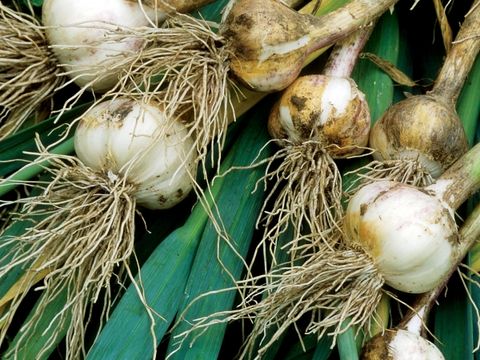
(Allium sativum)
Uses: Potent antimicrobial; often used to combat colds, ease sinus congestion, and stave off traveler’s diarrhea. Studies show that regular use can help gently lower blood pressure.
Preparation and doses:
Eat: Eat 1–2 cloves fresh daily.
Capsules: Take 4–8 mg allicin per day; enteric-coated products may be superior if specifically treating diarrhea.
Concerns: May interact with warfarin
Ginger
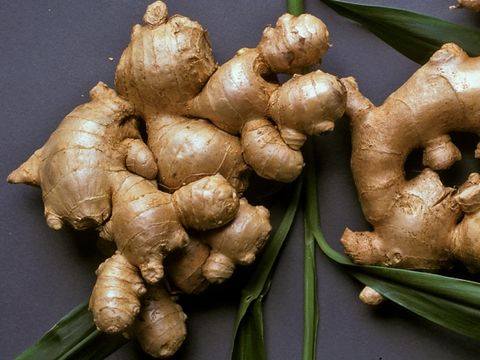
Uses: Premiere remedy for easing nausea, vomiting, and upset stomach; fresh teas relieve cold and flu symptoms.
Preparation and doses:
Tea: Steep ¼–½ tsp dried ginger or simmer 1 tsp fresh ginger root in 1 cup hot water for 10 minutes. Strain and sweeten, if desired. Drink 1–2 cups per day.
Capsules: Take 250–500 mg 2 times per day.
Concerns: Very safe in small amounts; heartburn and stomach upset can occur with high doses. Pregnant women should not take more than 1,500 mg per day of dried ginger.
Ginseng
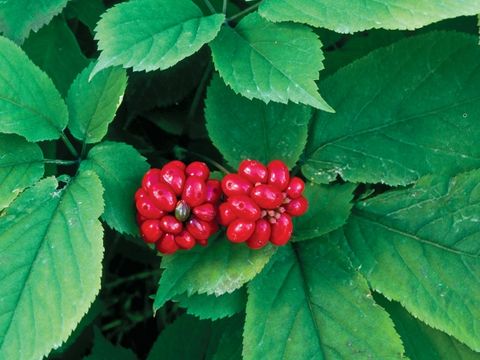
STEVEN FOSTER(Panax quinquefolius; P. ginseng)
Uses: Helps relieve and prevent mental and physical fatigue; shown to reduce the frequency and severity of colds; possibly beneficial for erectile dysfunction
Preparation and doses:
Tea: Simmer 1 tsp dried and sliced root in 1 cup water for 10 minutes. Strain. Drink 1–2 cups per day.
Standardized extract (4–7% ginsenosides): 100–400 mg per day
Concerns: Purchase from a reputable manufacturer, as ginseng has often been adulterated in the past.
Hibiscus
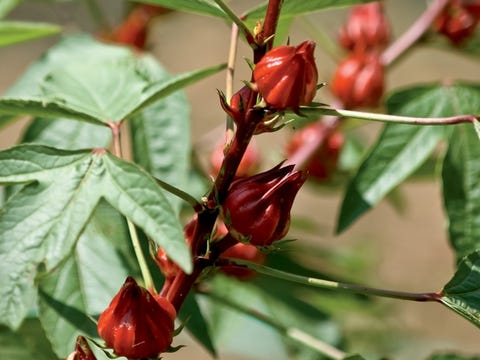
STEVEN FOSTERADVERTISEMENT – CONTINUE READING BELOW
(Hibiscus sabdariffa)
Uses: Lowers blood pressure and has mild diuretic activity; traditionally used to ease sore throats and colds
Preparation and doses:
Tea: Pour 1 cup boiling water over 1–2 tsp dried flowers. Steep for 10 minutes. Strain and sweeten, if desired. Drink 2 cups per day.
Capsules: Take 1,000 mg 2 times per day.
Concerns: Talk to your health-care provider if you have high blood pressure.
Hops
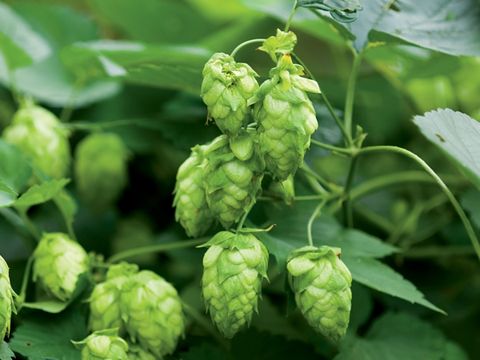
STEVEN FOSTER(Humulus lupulus)
Uses: Excellent sleeping aid; smaller, daytime doses used to ease tension, restlessness, and anxiety; might help reduce hot flashes during menopause
Preparation and doses:
Capsules: Take 200–300 mg 1-3 times per day.
Tincture: Take 2–4 ml before bed.
Concerns: Can cause sedation
More from Prevention: 14 Natural Remedies For Hot Flashes
Horse Chestnut
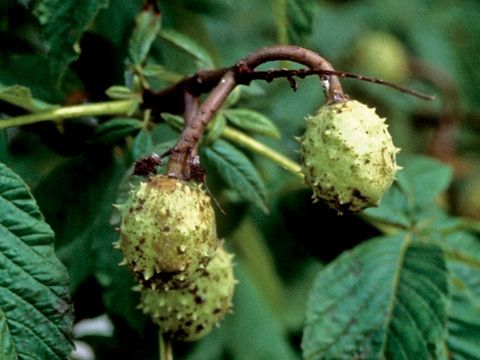
(Aesculus hippocastanum)
Uses: Seed extracts shown to be highly effective for treatment of varicose veins and chronic venous insufficiency (blood pools in lower leg veins after standing or sitting); topical gels can reduce swelling and tenderness due to injury)
Preparation and doses:
Seed extract (containing 100–150 mg aescin/escin): Take 600 mg per day in divided doses.
Concerns: Unprocessed horse chestnut seeds can be toxic; use only appropriately prepared seed extracts.
Kava

Uses: Clinical trials have shown kava to be highly effective for relieving anxiety. Also has significant muscle-relaxing effects.
Preparation and doses:
Tea: Simmer 1 tsp dried and sliced root in 1 cup water for 10 minutes. Strain. Drink 1–2 cups per day.
Extract of root: Take 100–200 mg 2 or 3 times per day. (Do not exceed 210 mg per day of kavalactones.)
Concerns: Rare cases of liver toxicity; do not use if you have liver disease, frequently drink alcohol, or are taking acetaminophen or prescription medications.
Lemon Balm
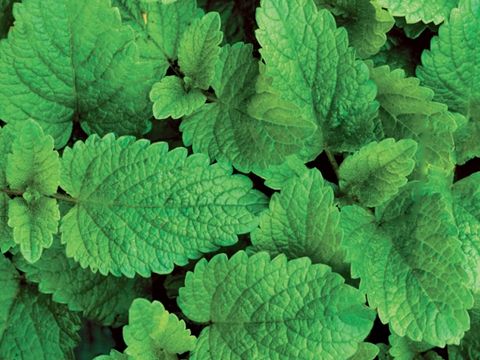
Uses: Gentle calmative; eases tension, digestive upset, and colic; topical creams used for fever blisters.
Preparation and doses:
Tea: Pour 1 cup boiling water over 5 or 6 fresh or 1 tsp dried leaves. Steep for 5 minutes. Strain and sweeten, if desired. Drink several times per day.
Concerns: None; suitable for all ages
Licorice
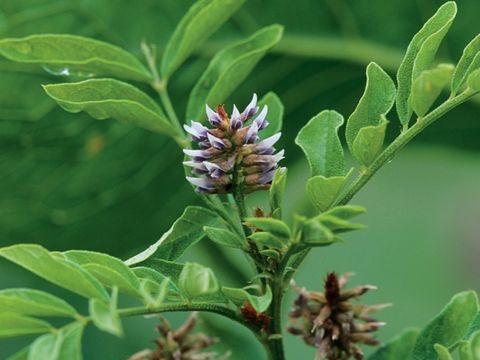
Uses: Excellent anti-inflammatory; soothes mucous membranes; useful for sore throats and coughs; protects and heals gastrointestinal tract
Preparation and doses:
Tea: Simmer 1 tsp dried and sliced root in 1 cup water for 10 minutes. Strain. Drink 2 or 3 times per day for up to 7 days.
Capsules: Take up to 3,000 mg per day for 7 days. Do not exceed 500 mg per day if taking for longer than 7 days.
Concerns: Do not use high doses for longer than 1 week as it elevates blood pressure and causes potassium loss. (DGL, a special preparation commonly used for heartburn, is safe for prolonged use.)
Marshmallow
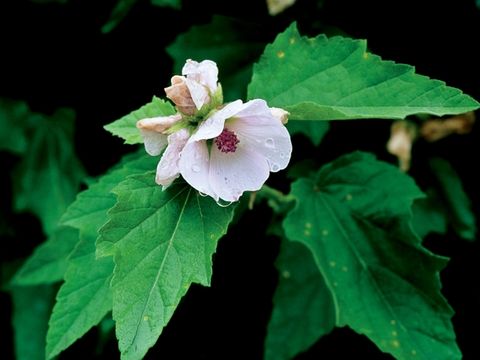
Uses: Root and leaf are rich in mucilage, a substance that coats the lining of the mouth and throat, as well as the tissue that lines the gastrointestinal tract. Used for sore throat, heartburn, and minor GI inflammation.ADVERTISEMENT – CONTINUE READING BELOW
Preparation and doses:
Tea: Pour 1 cup hot water over 1 tsp dried and sliced root or 2 tsp leaf. Steep for 2 hours. Strain and drink as desired.
Concerns: Take other drugs 1 hour prior to or several hours after consuming marshmallow, as it could slow absorption of oral medications.
Milk Thistle
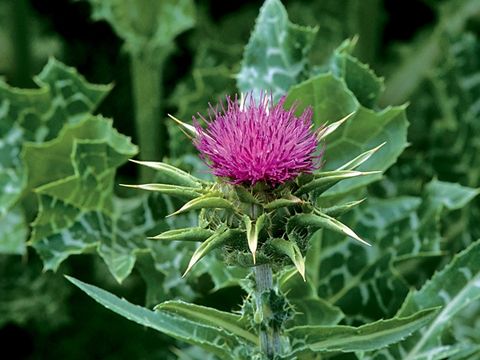
(Silybum marianum)
Uses: Protects the liver from damage caused by environmental toxins, medications, and alcohol. Recent studies suggest it protects the kidneys similarly.
Preparation and doses:
Extract (guaranteed minimum of 70% silymarin): Take 400–700 mg per day in divided doses.
Concerns: None known
Mullein
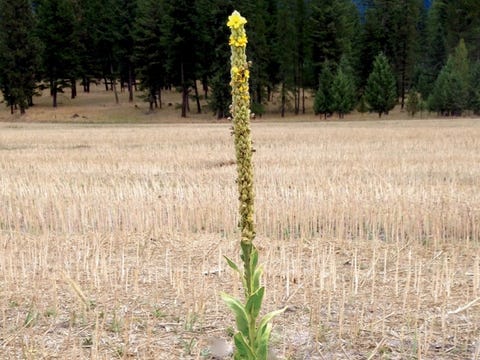
(Verbascum thapsus)
Uses: Leaves commonly used to relieve cough, sore throat, and chest congestion; steeped in oil, the flowers relieve earache.
Preparation and doses:
Tea: Pour 1 cup boiling water over 1–2 tsp leaves. Steep for 10 minutes. Strain, sweeten, and drink as desired.
Ear oil: Use as directed.ADVERTISEMENT – CONTINUE READING BELOW
Concerns: None known
Nettle
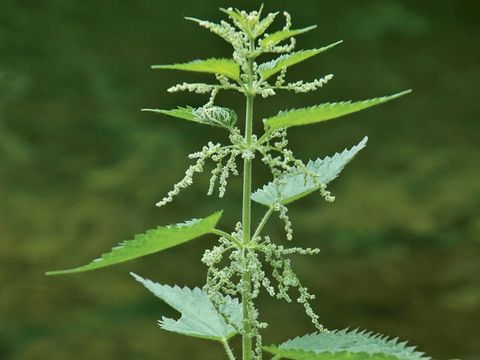
Uses: Fresh, freeze-dried leaves relieved seasonal allergy symptoms in one human trial. Research supports use of the root for easing symptoms of enlarged prostate. Tea widely recommended for its nutritive value.
Preparation and doses:
Tea: Pour 1 cup boiling water over 2 tsp leaves. Steep for 10 minutes. Strain. Sweeten if desired. Drink 1–3 cups per day.
Freeze-dried nettle capsules: Take 300–500 mg 2 times per day.
Nettle root: Take 250–400 mg 2 or 3 times per day.
Concerns: Wear gloves when handling fresh nettles to avoid stinging and irritation (sting is lost with cooking or drying); very safe herb.
Sage
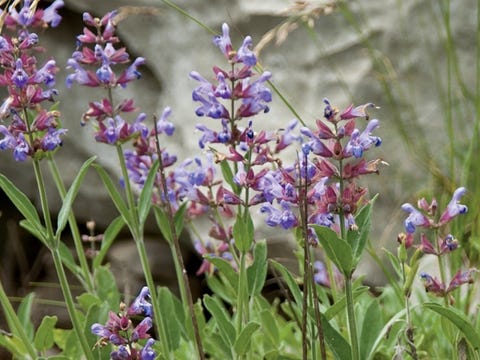
(Salvia officinalis)
Uses: Excellent for sore throat, cough, and colds; recognized in Germany as a treatment for excessive sweating; studies show it can help reduce menopausal hot flashes and night sweats.
Preparation and doses:
Tea: Pour 1 cup boiling water over 1 tsp leaves. Steep for 10 minutes. Strain. Drink, or use as a sore throat gargle.
Capsules: Take 500 mg dried leaf 2 times per day.ADVERTISEMENT – CONTINUE READING BELOW
Concerns: Do not use therapeutic doses during pregnancy; do not use sage essential oil internally.
Slippery Elm

(Ulmus rubra)
Uses: FDA-approved as a safe, nonprescription remedy for minor throat irritation; also very useful for relieving cough and occasional heartburn.
Preparation and doses:
Lozenges: Take as directed.
Tea: Pour 1 cup boiling water over 1–2 tsp powdered bark. Steep for 5 minutes. Drink 2 or 3 times per day.
Concerns: Take other drugs 1 hour before or several hours after consuming, as it could slow absorption of oral medications.
St. John’s Wort
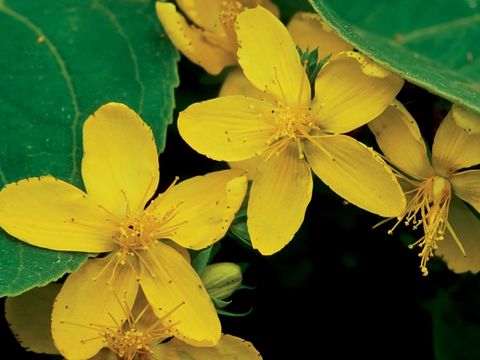
(Hypericum perforatum)
Uses: More than 40 studies have confirmed its effectiveness for relieving mild to moderate depression; may also relieve PMS symptoms and menopausal hot flashes, especially when combined with black cohosh.
Preparation and doses:
Standardized extract (standardized to 0.3% hypericin and/or 3–5% hyperforin):Take 300–600 mg 3 times per day.ADVERTISEMENT – CONTINUE READING BELOW
Concerns: Talk to your physician or pharmacist before using if you are taking prescription medications; the chance for herb-drug interaction is high.
Thyme
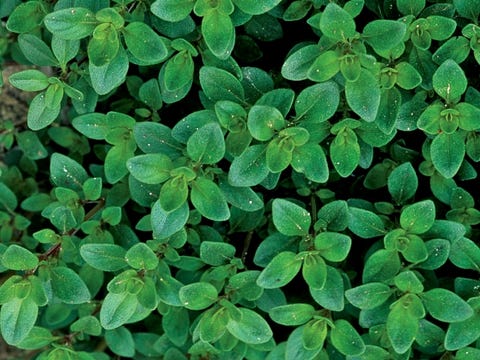
STEVEN FOSTER(Thymus vulgaris)
Uses: Highly regarded for relieving coughs, colds, and congestion; rich in volatile oils that have significant antimicrobial and antispasmodic activity
Preparation and doses:
Tea: Pour 1 cup boiling water over 1 Tbsp fresh or 1 tsp dried leaves. Steep for 10 minutes. Strain and sweeten, if desired. Drink ⅓ cup 3 times per day.
Concerns: None known
There can be little doubt that herbs are very potent and powerful. Although, as yet, research is limited on herbs, it is growing and many are shown to have powerful anti-cancer properties without the damaging side-effects of drugs.
Here are twenty herbs that just might help your fight against cancer. This article was prepared with help from two of the UK’s top herbalists, Alan Hopking and David Broom.
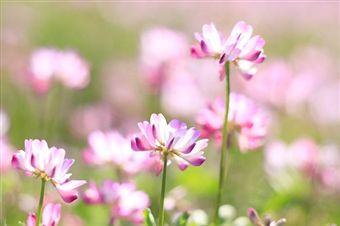
1 ASTRAGALUS (Huang Qi): A Chinese herb; an immune system booster, known to stimulate body’s natural production of interferon. It also helps the immune system identify rogue cells. Work with the herb in both cancer and AIDS cases has been encouraging. The MD Anderson Cancer Centre in Texas conducted research showing that taking Astragalus when having Radiotherapy doubled survival times.
2 BERBERIS FAMILY (e.g. Podophyllum peltanum): Slow active purgative. Research has shown these herbs to have a strong action against cancer and they have been used with many cancers, especially Ovarian cancer. In Cancer Watch March 2015, an ingredient Berberine, was shown in research to outperform brain cancer drug, Temozolomide in vitro. It was also shown to act synergistically with it and improve its efficacy.
3 BLOODROOT (Sanguinaria canadensis): Research shows consistent anti-neoplastic activity. It has been shown to be effective against cancer tumours, and can shrink them; it is one of the herbs in an anti-cancer poultice called Black Salve against breast and skin cancers; and has proven useful with sarcomas.
4 BUTCHERS BROOM (Ruscus aculeatus): The active ingredients of this herb has been found to be the ruscogenins which have tumour-shrinking and anti-oestrogenic abilities. Thus its use in the treatment of breast cancer.
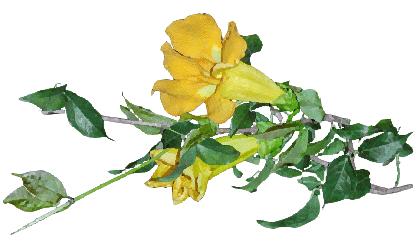
5 CAT’S CLAW (Uncaria tormentosa): An adaptogen and powerful immuno-stimulant, it enhances the white cells clean up process (phagocytosis). It is an excellent companion to astragalus, curcumin and echinacea. Research indicates it can reduce tumour size, particularly with skin cancers. It also helps reduce the side-effects of chemo and radiotherapy.
6 CHAPARRAL (Larrea mexicana): Cancer Watch covered a major research study from the US which heaped praise on this herb. It appears to boost the immune system, stop metastases and reduce tumour size. Seems especially interesting with breast cancer and is another ingredient in Black Salve. It is also an anti-oxidant and anti-microbial, with low toxicity.
7 CURCUMIN (Turmeric): This spice (Curcuma longa or Turmeric root) has been shown to have significant anti-microbial and anti-inflammatory activity. That alone seems enough for certain hospitals in America to consider using it in the treatment of polyps and colon cancer. However new research shows that it can both shrink cancer tumours and inhibit blood supply growth to tumours. It is a powerful antioxidant with liver protective benefits, and outperformed several anti-inflammatory drugs without side-effects in research.
8 DANG SHEN ROOT (Codonopsis pilosula): increases both the white blood cell and red blood cell levels, so can be extremely helpful to patients having chemotherapy and radiotherapy, or to patients whose cancer diminishes levels of either.

9 ECHINACEA: Another known immune system booster, it gained a populist reputation in treating colds. There is research on its helpfulness with brain tumours apart from its abilities to increase the levels of certain immune white cells in the body.
10 FEVERFEW: This herb caused a storm when research from Rochester University in New York showed it to be more effective than the drug cytarabine in killing leukaemia cells. The US Food and Drug Agency put the active ingredient, parthenolide, on to its fast track programme. Nothing has yet been heard. But then, the FDA has never approved a herb for use as a cancer treatment.
11 GOLDENSEAL: One cause of stomach cancer can be the bacterium Helicobacter pylori. This burrows into the mucous lining of the stomach to hide from gastric acids, and then causes irritation, acid reflux, ulcers and even cancer. Goldenseal is generally anti-microbial and is used in the Caribbean and South East Asia against parasites. Goldenseal, helped by the mineral Bismuth, will kill Helicobacter pylori. Vets seem to know this, even if doctors don’t. Berberine can be found in Goldenseal.
12 MILK THISTLE: Known for years to be helpful in strengthening the liver, this herb has now been shown to be capable of protecting the liver during chemotherapy. Research in America showed that leukaemia patients who took milk thistle had reduced liver toxicity and chemo side-effects. There is a little evidence that it has its own anti-cancer activity too.
13 PAU D’ARCO: This tree bark was original thought to be a strong anti-cancer agent, but then its actions were clarified as strongly anti-bacterial, anti-yeast and anti-microbial. That alone might be enough in some cases of cancer cause. But new research on the differing ingredients has shown the quinoids possess immune strengthening abilities and seem to help in cases of blood and lymph cancers.
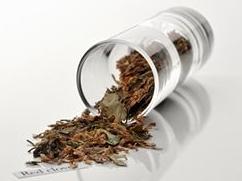
14 RED CLOVER: Research from a number of cancer centres including the Royal Marsden has shown its potential as a part of a treatment programme against oestrogen-driven cancers, from breast to prostate. One active ingredient in the so-called Herb of Hippocrates is the anti-oestrogen Genistein, which Professor Powles formerly of the Royal Marsden dubbed ’the anti-oestrogen’.
15 SHEEP’S SORRELL: Used in Essiac and other herbal remedies, it is a cleanser and aids healthy tissue regeneration. There is some suggestion from research that it helps normalise damaged cells and tissue. It is also a highly praised ’vermifuge’ – intestinal worms have little or no resistance to this herb.
16 SKULLCAP (Scutellaria barbata): Research has shown action against many cancer types, for example against cancers of the lung, stomach and intestines.
17 SUTHERLANDIA (Cancer Bush): Peer reviewed research studies indicate that this herb is anti-inflammatory, anti-viral and anti-fungal. It boosts the immune system and inhibits Tumour Necrosis Factor, known to drive wasting in cancer patients.
18 THOROWAX, or HARES EAR (Bulpleurum scorzoneraefolium): Research has shown its ability to enhance the production of natural interferon and it seems especially useful in bone cancer.
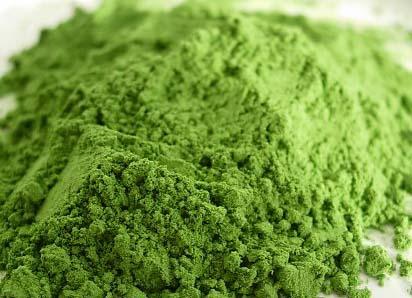
19 WHEATGRASS: One of the top private hospitals in South East Asia extols the benefits of freshly juiced wheatgrass. One shot gives you the chlorophyll of some 12 or more kilograms of broccoli. It acts as a blood purifier, and liver and kidney cleansing agent. In research, after two weeks of daily use, blood and tissue oxygen levels improve, as does circulation.
20 SWEET WORMWOOD: Another Chinese Herb, this has outperformed certain anti-malaria drugs and is now used by the aid agencies. It is strongly anti-microbial and anti-yeast and can be used as an effective part of an anti-candida diet. Also certain cancer treatments cause excesses of yeasts to form (for example, in Leukemia treatment) threatening the patients health further. Excess yeasts are even felt by some cancer experts to be one of the causes of cancer. However, in recent research Wormwood has been shown to have direct anti-cancer properties.
Because of EU laws, which allow you to buy cigarettes, medicines and GM foods, but not herbs in the High Street, you will have to visit a herbalist to be prescribed the above herbs. To go to the ’Our Natural Selection Shop’ Click Here.
HEALTH WARNING!
Please be clear, no one is saying these herbs are not without any side-effects. Equally they may conflict with some drugs. The important point is that we are still discovering many of their benefits, albeit very slowly, because individual local herbalists just do not have the funds to conduct large scale clinical trials like the drugs companies do. You should seriously consider the usefulness of herbs as a part of your integrative cancer-fighting programme. They just might make a serious difference to your health. But please make sure you go to an expert medical herbalist for clear and informed advice.
More from Prevention: The 100 Best Supplements For Women Excerpted from 21st Century Herbal by Michael J. Balick, PhD. Click here to learn more about the many modern-day uses for the ancient art of herbalism—as medicine, in beauty products, to spice up your cooking, and around your home.
Books can be your best pre-collapse investment.
Carnivore’s Bible (is a wellknown meat processor providing custom meat processing services locally andacross the state of Montana and more. Whether your needs are for domestic meator wild game meat processing)
The Lost Book of Remedies PDF ( contains a series of medicinal andherbal recipes to make home made remedies from medicinal plants and herbs.Chromic diseases and maladies can be overcome by taking the remediesoutlined in this book. The writer claims that his grandfather was taughtherbalism and healing whilst in active service during world war twoand that he has treated many soldiers with his home made cures. )
Easy Cellar(Info about building and managing your root cellar, plus printable plans. The book on building and using root cellars – The Complete Root Cellar Book.)
The Lost Ways (Learn the long forgotten secrets that helped our forefathers survive famines,wars,economic crisis and anything else life threw at them)
LOST WAYS 2 ( Wordof the day: Prepare! And do it the old fashion way, like our fore-fathers did it and succeed longbefore us,because what lies ahead of us will require all the help we can get. Watch this video and learn the 3 skills that ensured our ancestors survival in hard times offamine and war.)
Survival MD (Best Post Collapse First Aid Survival Guide Ever)
Conquering the coming collapse (Financial advice and preparedness )
Liberty Generator (Build and make your own energy source)
Backyard Liberty (Easy and cheap DIY Aquaponic system to grow your organic and living food bank)
Bullet Proof Home (A Prepper’s Guide in Safeguarding a Home )
Family Self Defense (Best Self Defense Strategies For You And Your Family)
Survive Any Crisis (Best Items To Hoard For A Long Term Crisis)
Survive The End Days(Biggest Cover Up Of Our President)
Drought USA(Discover The Amazing Device That Turns Air Into Water)



